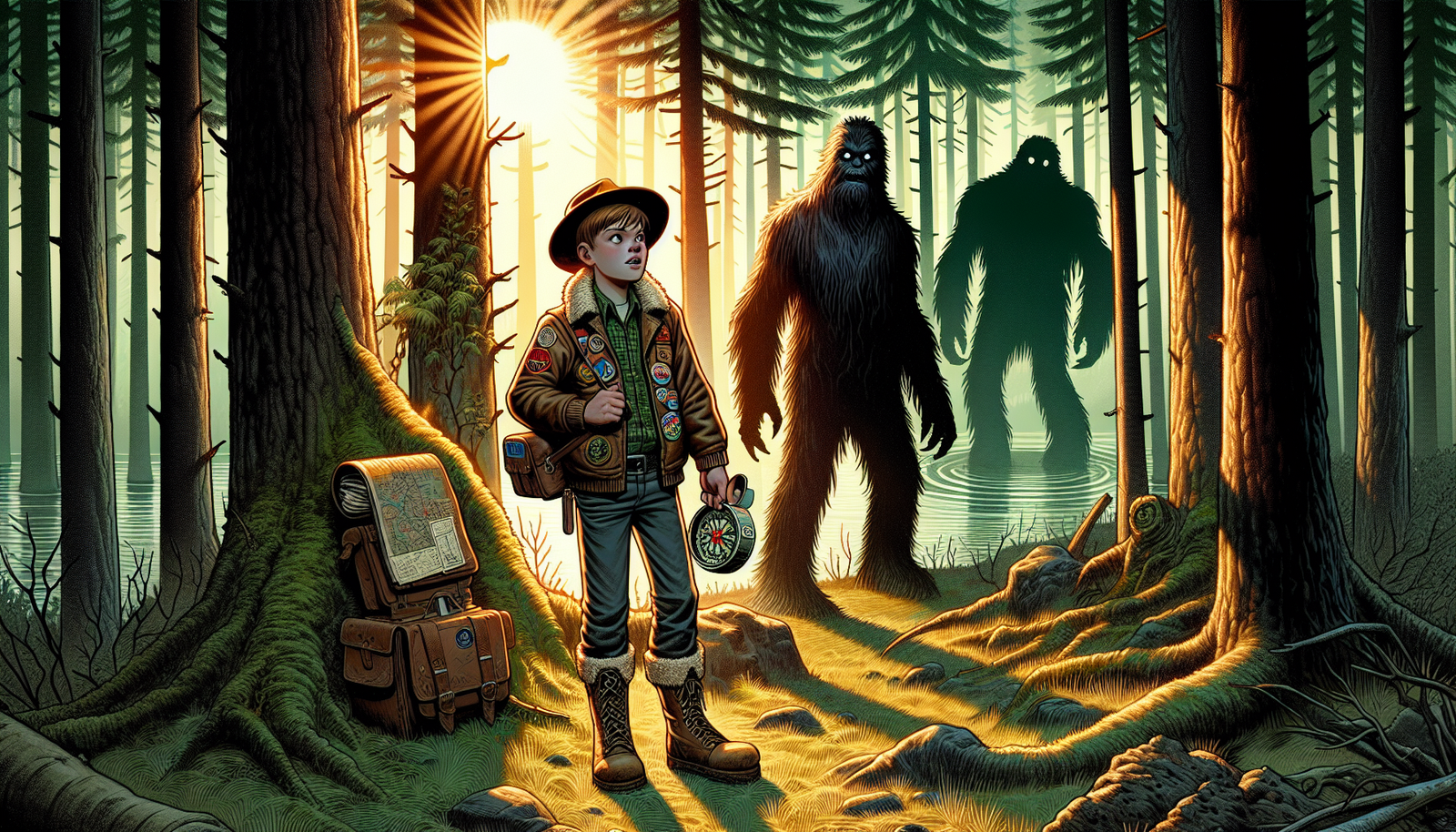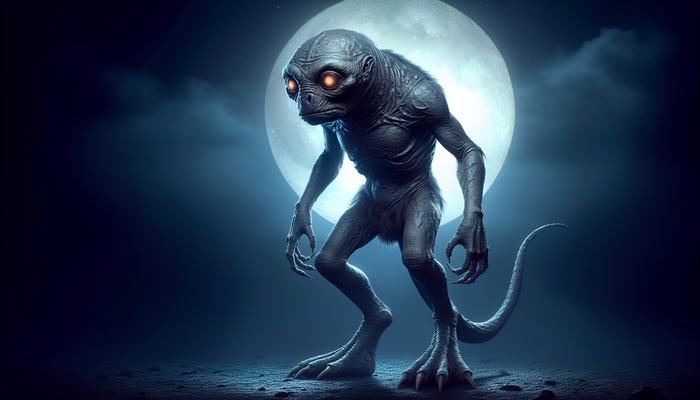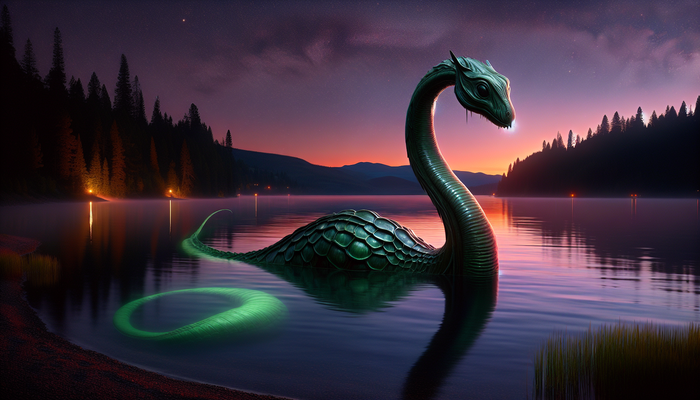Minnesota's Cryptid Mysteries

Lucas Jennings, Cryptozoologist and Adventurous Naturalist
Introduction
Imagine walking through the dense forests of Minnesota, where the silence is broken only by the rustle of leaves and an occasional distant howl. What secrets do these woods hide? As a land of serene lakes and lush forests, Minnesota harbors a lesser-known, more mysterious side that has captivated my imagination since childhood. This state is a hotbed for cryptid sightings - creatures derived from folklore and whispered tales that remain unverified by science. From the legendary Bigfoot to the haunting Wendigo, Minnesota's cryptids form a rich tapestry of lore that intrigues cryptozoology enthusiasts like myself.
In this article, I will shed light on some of Minnesota's most fascinating cryptids. We will explore the enigmatic Minnesota Iceman, the chilling legend of the Wendigo, reported Bigfoot sightings across the state's wilderness, stories of elusive lake monsters, and encounters with the fearsome Dogman. Each account adds to the state's captivating cryptid mysteries that have left their mark on local communities. As we navigate through eyewitness testimonies, scientific analysis, and the cultural significance of these creatures, we will emphasize the need for ethical exploration and the impact our discoveries may have on delicate ecosystems and indigenous cultures. The world of cryptozoology thrives on camaraderie and curiosity - values I hope to promote as we delve into the whispers from Minnesota's wilds.
The Frozen Enigma - The Minnesota Iceman
Our first cryptid is shrouded in an icy mystery that has baffled researchers for decades. In the late 1960s, a humanoid creature preserved in a block of ice began appearing at shopping malls, carnivals, and fairs across the United States. This "Minnesota Iceman" was typically encased in a refrigerated container as crowds gathered to catch a glimpse of the bizarre exhibit. Descriptions portrayed it as a male human-like figure, approximately 6 feet tall, covered in dark fur-like hair about 3 to 4 inches long. It had oversized hands and feet with thick claws and a flattened nose. One of its eyes appeared to be missing, allegedly knocked out by a bullet wound to the back of its head.
The Iceman changed hands several times, with its exhibitor claiming it had been found frozen in a block of ice in locations ranging from Siberia to Vietnam. But it was two cryptozoologists - Bernard Heuvelmans and Ivan T. Sanderson - whose 1969 examination transformed it from a sideshow attraction to a subject of intense scientific interest. They concluded it was likely a new primate species, with Heuvelmans classifying it as Homo pongoides. The Smithsonian Institution's primatologist John Napier also examined the Iceman, controversially declaring it an "elaborate hoax" made from latex rubber.
The debate rages on regarding the Iceman's authenticity, but it remains one of Minnesota's most iconic cryptid mysteries. I have long been fascinated by the implications if the original Iceman was indeed a genuine animal specimen. It would shake the foundations of hominid evolutionary theory and force us to reconsider what other relict species may still roam the earth virtually unknown to modern science. Regardless of its true nature, the Minnesota Iceman demonstrates that the line between reality and myth is not always clearly defined in the realm of cryptozoology.
The Wendigo - A Chilling Legend from the North
While the Iceman's origins may be uncertain, the Wendigo stems directly from Algonquian folklore and is deeply woven into Minnesota's cultural fabric. This ghoulish creature is believed to stalk the northern forests of Minnesota in search of its next meal - human flesh. Eyewitness reports describe it as emaciated and towering up to 15 feet tall. Its eyes are said to glow eerily against ashen skin tightened against its bones. Fangs protrude from a lipless mouth below its long, snake-like tongue.
The Wendigo legend originated as a cautionary tale among indigenous communities, warning against greed, consumption, and cannibalism. According to lore, those stranded in the bitter northern winters who resorted to eating human flesh would be transformed into the monstrous Wendigo, cursed to wander endlessly with an insatiable hunger. One of the most chilling aspects of Wendigo folklore is that it can possess humans, turning them into cannibals against their will. Several gruesome cases of murder and cannibalism have been attributed to Wendigo possession over the centuries.
While the Wendigo may not be a flesh-and-blood creature, it forcefully represents the dangers of unchecked greed and excess through folklore. It reminds us to treat the land and its resources with respect, lest we unleash supernatural consequences. There are still reported sightings today, from campers and hikers who describe hearing its bone-chilling screams in the night, accompanied by a stench of decay. Some claim to have seen its towering silhouette stalking the tree lines. The Wendigo's enduring presence in Minnesota's cultural consciousness keeps this cautionary tale alive, serving as a warning to those who would attempt to tame the wilds.
Bigfoot in Minnesota - Sightings and Speculations
Wandering the same northern forests as the dreaded Wendigo is another legendary creature that has captured the imaginations of Minnesotans for decades - Bigfoot. This massive, bipedal ape-like beast is the rock star of the cryptid world, with sightings reported across the globe. Minnesota's remote woodlands provide ideal hiding places for such a shy, elusive creature. While less famous than hotspots like Washington and Oregon, Minnesota has accumulated hundreds of Bigfoot sightings over the years.
One of the earliest documented encounters occurred near the Ojibwe reservation of White Earth in 1908. Two berry pickers claimed to have been chased from the forest by a "wild man" whose footprints were later measured at 16 inches long. In the 1960s, there were multiple visual sightings and vocalizations reported near the Vermilion River, northeast of Duluth. In 1976, an 8-year-old boy saw a large, black Bigfoot emerge from the forest near Strawberry Lake, shaking the ground as it walked.
Some of the most dramatic events happened recently near the Kettle River in Carlton County. Starting in 2008, the Aho family described several encounters with a nine-foot-tall Bigfoot on their rural property, including a daylight sighting by multiple witnesses. Their reports attracted the attention of the TV show Finding Bigfoot, which held a town hall meeting in 2011 that drew scores of witnesses.
There is a devoted community of Bigfoot researchers across Minnesota employing audio recordings, footprint casts, and statistical analysis to gather evidence. Skeptics argue that misidentification and hoaxes account for all sightings, but believers point to the consistent eyewitness descriptions across generations as proof of Bigfoot's existence. Personally, I find the continued sightings and intense local interest compelling, suggesting these reports cannot be entirely discounted. The search for Bigfoot endures as one of cryptozoology's ultimate quests, with Minnesota remaining prime hunting grounds for this elusive hominid.
Mysterious Lake Monsters of Minnesota
While Bigfoot may prowl the forests, Minnesota's lakes harbor mysteries of their own. Sightings of strange creatures in local waters have given rise to legends of lake monsters lurking in the state's more than 10,000 lakes. One of the most famous is a serpent-like beast named Pepie, believed to dwell in Lake Pepin. This wide, 22-mile lake along the Mississippi River has been the source of frequent monster sightings dating back to Native American traditions.
In 1871, a local newspaper reported a "sea serpent" in Lake Pepin more than 30 feet long and moving with great speed. A century later in 1968, two fishermen on the lake saw a large dome-shaped back undulating through the water. There have been many other eyewitness accounts of an enormous serpentine creature surfacing on the lake over the decades. Some speculate Pepie could be a prehistoric plesiosaur, while skeptics argue it is likely just a succession of misidentified large fish, swimming deer, or floating logs.
Lake Pepin is not the only site of supposed lake monsters. Lake Vermilion near Tower has a legend dating to the late 1800s of a giant snake-like beast aptly named Vermie. Lake Minnetonka, Wisconsin's Lake Monona, and even the St. Croix River have their own monster tales. While the scientific probability of these creatures surviving undetected is slim, their enduring presence in local folklore is undeniable. Much like Nessie in Loch Ness, these lake monsters have become ingrained in the cultural identity of their communities, sources of local pride and allure for visitors. Until definitive proof surfaces, the mystery surrounding Minnesota's lake cryptids persists.
The Dogman - Minnesota's Fearsome Predator
Werewolves may be creatures of myth, but Minnesota has its own beastly canine shrouded in mystery - the Dogman. While less renowned than other local cryptids, sightings of this bipedal wolf-like creature have been reported across northern Minnesota. It is often described as possessing a muscular, humanoid form, dense fur, pointed ears, and piercing eyes that seem to glow. Its size ranges from 7 to 9 feet tall when standing upright. Several eyewitnesses attribute unnatural speed, strength, and stealth to the creature.
Encounters with the Minnesota Dogman typically involve feelings of intense fear or unease. One man described seeing it while hunting near Long Prairie in the early morning, only for the creature to stare back at him after scaring off deer it was apparently stalking. Local Ojibwe tribes warn children that the Dogman stalks the forests, capable of moving silently even in snow. Its origins remain unknown; some say it is a primal forest spirit, others believe it could be a surviving Ice Age canine species. Cryptozoologists speculate it may share links with other wolf-like cryptids sighted in states like Michigan and Wisconsin.
While the Minnesota Dogman may never move beyond folklore into scientific acceptance, its enduring presence in oral traditions speaks to mankind's primal fear of the unknown. It embodies the danger and wildness of nature, reminding us that there are forces beyond our control or understanding even in our civilized world. As with many cryptids, the Dogman's mystery may be as valuable as its reality in keeping us connected to the unseen world.
Challenges and Controversies in Cryptozoology
The creatures profiled so far capture the imagination, but cryptozoology also has its share of challenges and controversies as a field. Sightings like these foster reactions ranging from breathless belief to harsh skepticism. As a cryptozoologist, I aim for an open-minded but balanced approach. I understand that eyewitnesses genuinely believe their accounts, but concrete evidence remains essential. Cryptozoology currently sits at the fringes of accepted science, frequently accused of pseudoscience. Gaining legitimacy requires adherence to rigorous methodologies, ethical standards, and acknowledgment of difficult truths.
Any search for cryptids must prioritize conservation and protection of the ecosystems potentially inhabited by these species. Their discovery could be severely disruptive if not handled with care. We must also be sensitive to indigenous communities and the significance of certain creatures in their cultural heritage. Dialogue and collaboration are key. There are still those who treat cryptozoology as entertainment rather than science. While the curiosity and passion of enthusiasts helps drive interest, credibility depends on commitment to facts over fantasy.
Despite internal debates and external criticism, the cryptozoology community continues to thrive on camaraderie and mutual fascination with the unexplained. Organizations like the International Cryptozoology Museum and events such as Crypticon provide platforms for constructive exchange of ideas and evidence. Supportive communities can balance healthy skepticism with encouragement of scientific inquiry. As technology advances and previously inaccessible environments open up, the chances of documenting a legitimate cryptid grow. Minnesota already has a strong foundation of sightings, legends, and dedicated researchers to potentially make it the source of such a breakthrough someday.
Conclusion
As this article has illuminated, Minnesota's wilderness harbors a hidden world of cryptid lore and eyewitness accounts that have galvanized local communities and the greater cryptozoology field. The Minnesota Iceman's frozen mystery, the Wendigo's chilling symbolism, Bigfoot's elusive presence, stories of lake monsters, and the fearsome Dogman all contribute to a tapestry of fascination, skepticism, and enduring cultural relevance across the state. They embody the sense of wonder and discovery that fuels the cryptozoological pursuit.
The accounts compiled here are but a sample of the many whispers that emerge from Minnesota's forests, lakes, and towns. Their secrets continue to compel open-minded exploration and thoughtful investigation within the cryptozoology community. As we participate in this search, we must remain ethical, analytical, and self-critical, acknowledging that these creatures likely inhabit the gray fringes between reality and imagination. Their true value may be what they reveal about our relationship with the natural world, its unknown dimensions, and our own humanity. But who knows what compelling evidence we may uncover if we listen closely to the whispers in the wild? I know I will never stop searching, and I hope your curiosity is piqued to join me on this adventure.
What local cryptid tales have you heard? Please share your thoughts and experiences in the comments below! Let's keep the conversation going and continue searching for answers through thoughtful community engagement. The search for cryptids thrives when we work together.
From Bigfoot to UFOs: Hangar 1 Publishing Has You Covered!
Explore Untold Stories: Venture into the world of UFOs, cryptids, Bigfoot, and beyond. Every story is a journey into the extraordinary.
Immersive Book Technology: Experience real videos, sights, and sounds within our books. Its not just reading; its an adventure.



























